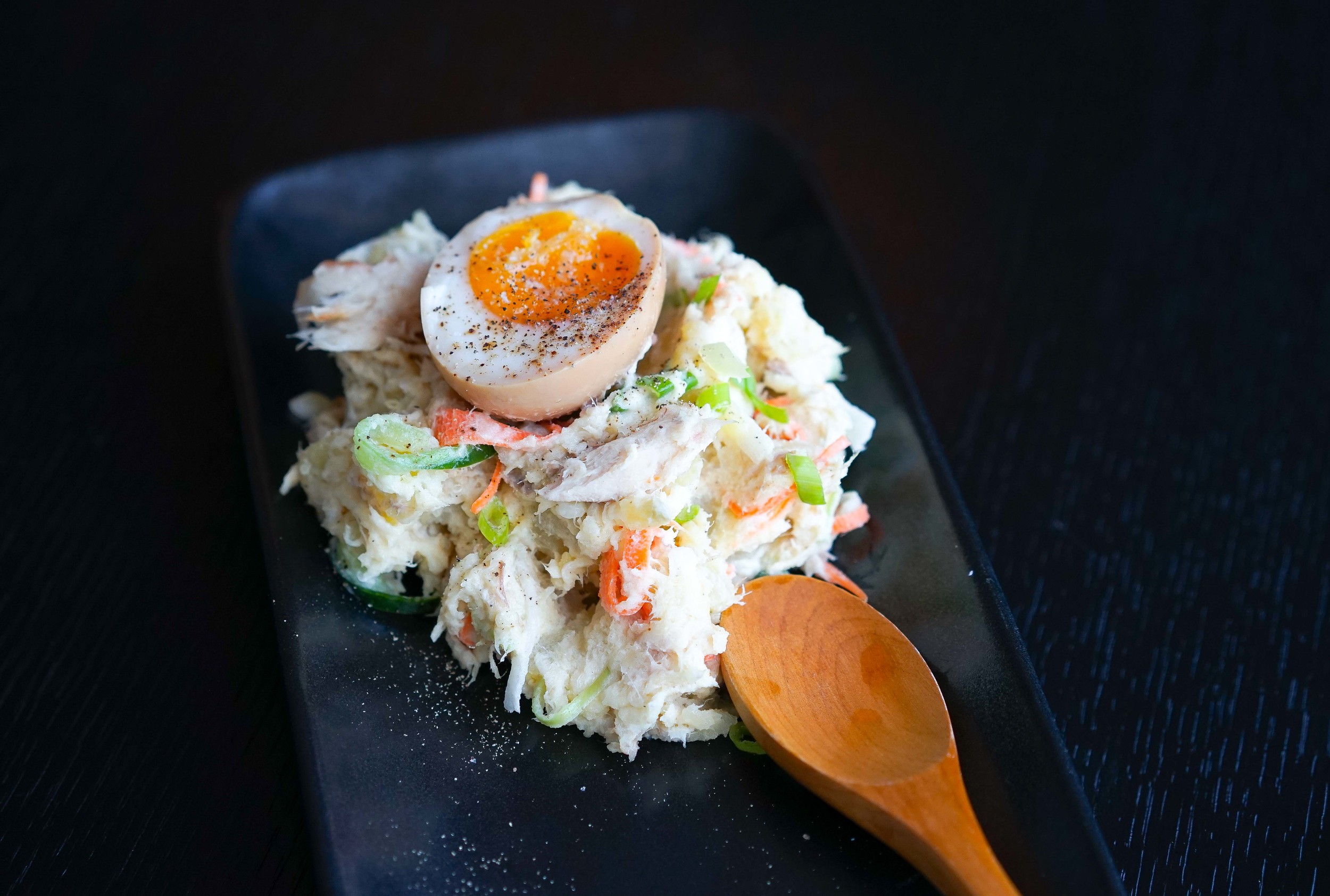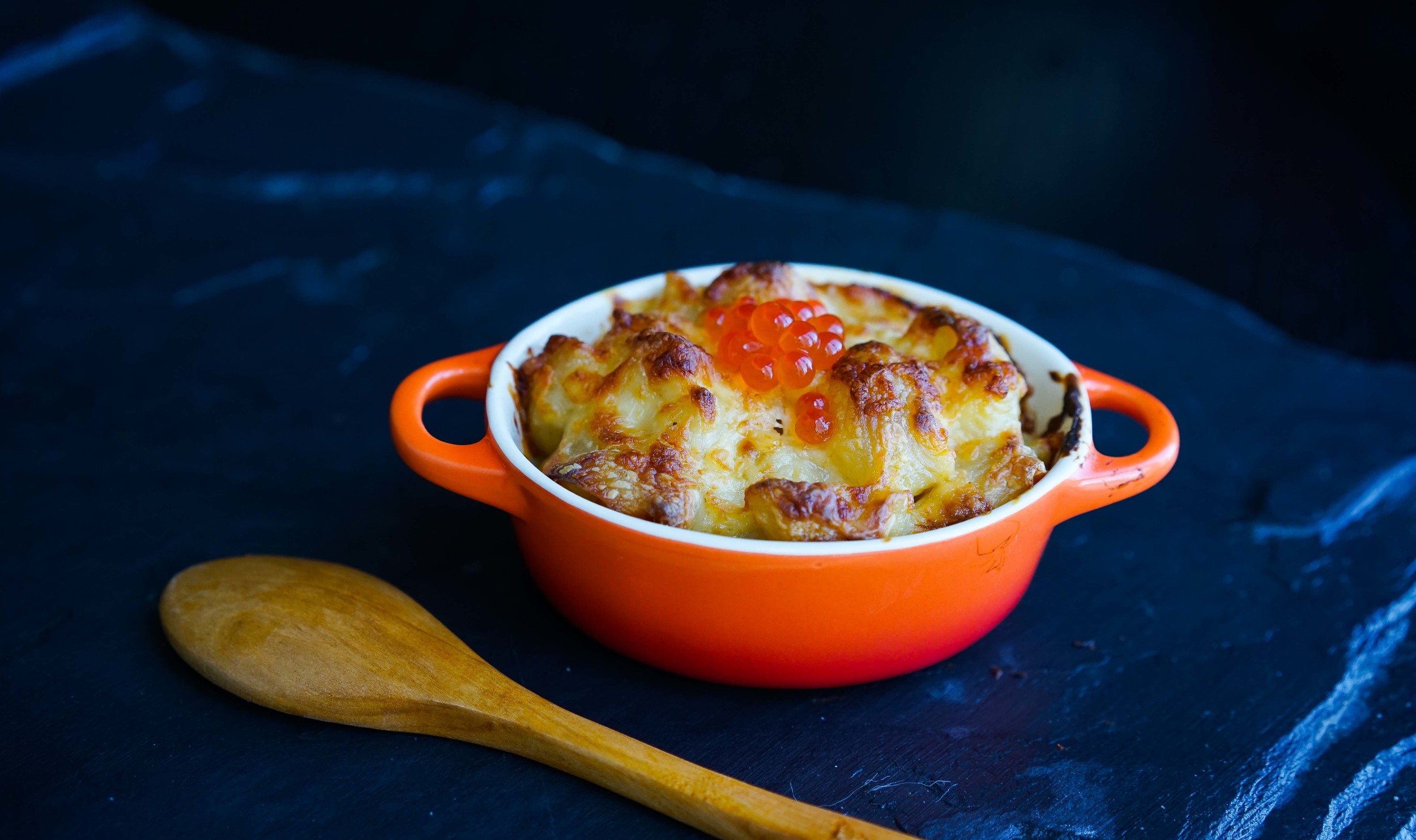Rush hour on a Friday evening, and the five shores of Tokyo’s famous Shibuya Scramble Crossing are brimming with pedestrians. Tick, tick, tick, the signal counts down slowly as traffic from all sides comes to a halt. Then, suddenly, the ticks are rapid, and whoosh – waves of people spill into the crossing from every direction as if carried on a tide. In the centre, where the tides meet, a carefully choreographed scramble takes place, thousands of bodies performing quick crab movements – side step, forward, to the other side – skittering over tarmac like hard-packed sand.
image courtesy of vien tran, http://vientran.tumblr.com
Every day, precisely every two minutes, another scramble. Each time the kerbs fill, then spill, another few thousand bodies are successfully deposited on the opposing shore. It might be going against the rules a bit, but at the centre of a colossal Friday night whoosh, try stopping, just for a second, and looking up, consider even, turning a quick pirouette (I did, and you’ll probably want to), because Tokyo city is home to over 13 million people, and Greater Tokyo, home to 39 million, and that’s difficult to imagine, but on a busy Friday night, at the epicentre of the Scramble, you don’t need to worry about imagining it, because you can feel it. And it feels like pure exhilaration.
image: vien tran
Brilliant screens, flashing lights, the whirring sound of a 39 million strong metropolis full of people all going somewhere… But where? At 6pm on a Friday night, mostly, I’m thinking, out to find something to eat. My mind rushes (naturally) to the poor chefs, 39 million hungry mouths! And not just the chefs, the table-wipers, dish-doers, napkin-folders, and even the restaurant furniture itself, worn-out chairs, sticky table tops, another evening groaning under the weight of plates and glasses and bodies… Not to mention the food – tons of it, something like 2,000 tons of seafood alone consumed in Tokyo everyday. Another Tokyo figure too big to visualise, virtually impossible to comprehend…
But I can’t afford to spend too long worrying about it, because, like everyone else in Tokyo, I too am on my way to dinner, and the walking pace set by the only one of us who knows where we are going threatens to lead seafood-tonnage-pondering-pirouette-turners behind…
Through Shibuya’s tangle of hilly lanes, past love hotels and convenience stores, via occasional wrong turn, but more frequent right, we are deposited, finally, at a tiny hobbit door.
I am not sure why it is a Tokyo-truism that the best food is usually found behind the smallest of doors, but it is. The miniature doors themselves are a hangover from the Edo era, when lazy taxmen could be mislead as to the true size of a premises by trickily affixing to it a disproportionate door. Nowadays however, these little wooden doors usually hide excellent izakaya – Japanese ‘pubs,’ frequented by after-work drinkers and offering a menu of, for lack of a better description, ‘pub snacks.’ But, not unpredictably, what counts as pub grub in Tokyo, is a world away from rustle-y crisp packets and out-of-date pork scratchings…
Through the hobbit door, a wave of shouted greetings descends, and we are shown to the end of a communal table. Some menu browsing, (thank God for picture-menus), a bit of pointing, some nodding, a hearty round of ‘arigato-s’ in all directions, and moments later the plate procession starts...
Little carafes of cold sake first, choose your own cup from the proffered selection of beautifully worn and artfully mismatched ceramics, then rare-grilled miso chicken, bubbling curried crab, tender grilled white asparagus, smoked mackerel potato salad, so fresh and delicate and unexpected, then last, the piece-de-resistance, uni (sea urchin) mac & cheese, hissing and bubbling away in a shallow iron ramekin, fresh from a hot grill, salmon roe like orange jewels dotted on top. What other dishes might be improved by the addition of fresh sea urchin is what I’d like to know?
But much more uni next week, because, post-dinner, sake-fuelled, full-bellied, and back out in the winter air, it’s time to move on to shifty Shinjuku in search of the famous ‘Golden Gai’…
A vision of what Tokyo might have looked like not so long ago, Golden Gai's narrow and intersecting alleys are nowadays tightly ringed by re-development, and offer a contrast to the more modern chaos of night-time Shinjuku. The ‘Gai’ (or street) itself is actually a series of six lanes, a kind of shanty of two storey Showa-era wooden buildings packed with over 200 tiny bars, most big only enough to accommodate around ten, or even fewer, people.
Overshadowed by towering new office buildings above, and neighboured by a cacophony of blinking pachinko parlours and host bars overflowing with orange-tinted boys and mini-skirted girls below, Golden Gai was infamous in its pre-1960s heyday for prostitution, and later narrowly survived being burnt at the hands of the Yakuza (who sought to clear it to sell to developers) in the 1980s.
It was the loyal clientele of the area’s historic drinking establishments who came to the rescue then, forming groups and taking turns to stand guard against the Yakuza at night. Nowadays though, it seems that the threat of fire is back, and this time, likely to see the Gai closed for good. With the Tokyo Olympics scheduled for 2020, and the city firmly focussed on fire-safety ahead of the event, Golden Gai’s rabbit warren of wooden structures have sadly been deemed not to make the saftey-grade, and will likely face a bulldozer soon.
But the Gai is garrulous in her fin de siècle, and more alive now than ever. So get there soon! And don’t underestimate the tricky task of choosing which of the myriad bars to enter either. There are few indicators of which might be better or worse from the outside, to the uninitiated they all look pretty similar. Peer through the small front windows, clear a circle in the fog with a sleeve to get a better look, everywhere seems crammed entirely full, no room for any more in there, surely?
But from inside people wave, and beckon, budge up along the bar, and budge up further until we can just cram in, legs jammed closed, sardined thigh-to-thigh, virtually suspended above the one-too-few bar stools and fixed in place by the crush. The right choice is important, see, as there’s no possibility of leaving now, after such a generous re-shuffle … And so there's nothing for it but more sake, more nodding, more arigato-s, and more pub-snacks, although this time better deserving of their name – dried squid, I can tell you, is well and truly the pork-scratching of the East.
image: vien tran
The midnight train home is Tokyo’s last, and Shibuya’s shifting shores of people seem to have re-located and re-amassed on the platform at Shinjuku station. Virtually empty as it arrives, the doors of the last train open slowly, and then, the final whoosh…
No dance this time, no side, front, left and right, just the power, forward momentum, and crush of a tidal wave breaking. Puuusssh, more people to board, pressure building fast, but more people still and then even more… Until the doors squeak closed at last, and the packed train pulls away, 1,000 passengers pinned in place, swaying as one, bobbling along the lines in the dark, one little hum in the buzzy chorus of Tokyo’s busy night.
If you’d like to follow in our Izakaya footsteps, head to Nakamee Izakaya in Shibuya, see – www.mugen-c.jp. For Golden Gai, head to Shinjuku, ask a local for directions, choose a bar carefully, beware of dried squid, (and get there quick) …
Many thanks to the v talented Vien Tran for some excellent Tokyo tour-guiding, and for the loan of some of the pics in this post!
Japanese Potato Salad with Smoked Mackerel & Soy Eggs
Counter-intuitive as it sounds, potato salad is a Japanese thing! Although the version that you are likely to eat at a Tokyo izakaya, or pick up for lunch from a depachika (department store food hall) only has the basics in common with the Western version – potatoes and mayonnaise – and even then, there are important differences.
While waxy potatoes are usually used in a Western-style salad, because they hold their shape, you can use a fluffier potato for the Japanese version as the potato pieces are meant to integrate in a little more. The mayo is a similar case of same same, but different. The one you'll want for this recipe is, not surprisingly, Japanese mayonnaise (i.e. Kewpie brand), which is richer and tangier than its Western counterpart.
And that’s where the 'same-sames' end, and the true differences start...
First, lots and lots of raw, julienne-peeled vegetables – celery, cucumber, carrot, and daikon. These give the salad a fresh crunchiness, a lightness almost, and really help balance the heavier potatoes and mayo. (This is definitely not the gloopy bacon-y salad that we’re familiar with from picnic spreads and BBQ lunches.)
The soy-eggs are important too – cooked to just the right runniness and then quickly cooled and marinated in soy overnight to absorb some colour and flavour.
Last, as per the izakaya dish that inspired this recipe, I’ve included smoked mackerel in this salad. The smoky flavour is delicious with the creamy potatoes, and the texture of the flaked mackerel pieces works brilliantly to bind the salad together too. But if you’re not a fan, or can’t get mackerel, smoked trout could substitute, or, for a vegie version, omit the fish altogether.
Ingredients
(Serves 6 as a side)
- 700g potato – approx. 3 medium potatoes
- 1 whole smoked mackerel – around 350-400g
- 2 small sticks of celery
- 1 small (i.e. Lebanese) cucumber
- 1 carrot
- 8cm section of daikon radish
- 2-3 spring onions
- Just under 1 cup Japanese mayonnaise (i.e. Kewpie mayonnaise)
- 1 teaspoon of seasoned sushi vinegar
- Sea salt & freshly ground black pepper
- Some chives – chopped (optional, to garnish)
For the Soy Eggs
- 3 fresh eggs
- 3 tablespoons of soy sauce
- 3 tablespoons of mirin
- 130ml water
Make the soy eggs the night before by placing a small pot of water on to boil. Getting the cooking time of the eggs just right is important for dish because the lovely soft orange yokes also act to garnish the salad. Obviously eggs differ in size, but for a pretty standard medium to large egg, I’ve found the follow method gives the right result.
Leave the eggs in the refrigerator until the water is actually boiling, then carefully lower the fridge-cold eggs into the pot of boiling water and cook on a low boil (water bubbling, but not violently so), for exactly six minutes. Now drain, and plunge the eggs straight into an ice bath to quickly cool.
Prepare the soy marinade by combining the soy sauce, mirin, and water in a zip-seal sandwich bag.
When the eggs are cool enough to peel, do so very carefully (remembering the yokes are quite soft), and place into the bag of marinade. Gather the bag together at the top with an elastic band, (in doing so ensuring that the eggs are fully submerged in the marinade), and place in the fridge to absorb colour and flavour overnight. Rotate the eggs in the bag once or twice while marinating to ensure that they absorb colour evenly.
To prepare the potatoes, peel and cut into large (5cm) chunks. Boil in a large pot of water until cooked though (test this with the tip of a pointed knife), and then drain. Once drained, return the potatoes to the empty pot and place briefly back over a very low heat. Allow to steam dry.
After a few minutes, the potato should be sufficiently dry, and can be set aside to cool.
Next, prepare the mackerel by first removing the head, then peeling away the skin. Scrape off any dark flesh, then carefully flake into small pieces, taking care to remove all bones as you do so.
A julienne peeler is very handy to prepare the vegetables, but if you don’t have one, make do with a speed peeler and a sharp knife, peeling the vegetables into thin strips first, then julienning with a knife into fine ribbons.
Do this for the celery (it will be necessary to half the celery lengthwise first), the cucumber (cut in half lengthways, remove the seeds with a pointed teaspoon, then julienne), the carrot, and the daikon.
Depending on your feelings about raw onion, slice up either two or three spring onions into thin rounds and add to taste.
Next, break the cooled potatoes up a little using a fork, then mix through the flaked mackerel, julienned vegetables, and spring onions. Season generously with salt and pepper, then add the Japanese mayonnaise along with the sushi vinegar and mix again until everything is blended… Best though not to mix so vigorously that everything becomes a complete mush, it’s nice if small chunks of potato and flakes of mackerel are still discernable in the finished salad.
Now cover and place in the fridge for at least an hour in order to give the flavours time to develop.
To serve as individual portions, place a pile of salad on each plate and top each with a soy egg halved lengthways and a scattering of chopped chives. If serving in a large bowl or on a platter, chop one of the soy egg through the salad, and halve the remaining to garnish. Finish off with a scattering of chopped chives.
Uni (Sea Urchin) Mac & Cheese
It’s typical to think of Japanese food as fresh and healthy, but the kind of food usually served at an izakaya – salty, rich, fried, perfect to accompany a beer or some sake – is often anything but. Japanese junk food is how I like to think of it, or extreme comfort food if not ‘junk’ food exactly.
Sea urchin and salmon roe might not be your mac and cheese usual suspects, but that is what is so sublime about this dish. The most comforting of all comfort foods, crispy-cheesy on top, oozy-creamy in the middle, but spiked with surprising little oranges jewels of fresh flavour. I sense doubts, but if you love sea urchins, I'd urge you give it a try... and, if you don’t love sea urchins, well, I not really sure we can be friends anyway!
Ingredients
(Serves 4)
- 250g macaroni
- 45g butter
- 40g flour
- 1 small garlic clove – crushed
- 750ml whole milk
- 60g of frozen sea urchin (uni) roe – defrosted
- 200g grated cheddar cheese
- A tablespoon of salmon roe (ikura) to serve
Place a large pan of salted water on to boil ready to cook the macaroni.
While the water is reaching temperature, melt the butter in a medium saucepan over low heat. Once melted, add the flour in small batches, stirring all the time to form a lump-free roux.
Now, turn up the heat up to medium and add the crushed garlic and continue to stir until the garlic is golden and caramelised.
Gradually mix in the milk, continuing to stir vigorously to ensure that the sauce is free of lumps.
Once you have added all the milk, bring the sauce up to a boil, then, once boiling, immediately turn down to a simmer. The sauce will thicken as it cooks.
By now the water in the large pot should be boiling and ready to cook the macaroni. Add the pasta to the pan and cook until al dente.
Now drain the pasta, then add it immediately to the white sauce, along with half the cheese. Season generously with salt and pepper.
Finally, stir the sea urchin roe through the mixture, taking care not to break apart the individual pieces too much as you do so. It’s nice to come across visible bits of the orange uni as you eat.
Lastly, transfer to four individual gratin dishes and top with the remaining cheese. Then, place under a hot grill to cook until the cheese is browned and sauce bubbling.
Serve, still bubbling, straight from the grill, topped with a piled spoonful of salmon roe.














